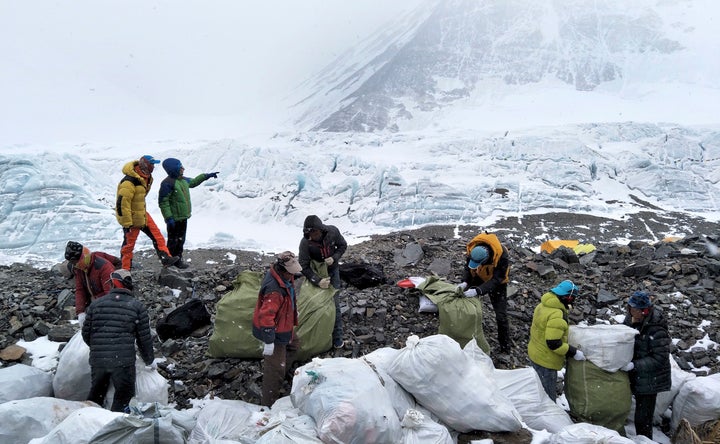
Tens of thousands of tourists flock every year to the Mount Everest base camp located in China’s Tibet Autonomous Region to catch an awe-inspiring glimpse of the world’s tallest peak. But China is reportedly putting a stop to this human deluge, limiting annual access to the popular site to just a few hundred mountaineers and researchers.
A growing garbage problem on the mountain has been pinpointed as impetus for the change.
Local authorities in Tibet’s Dingri County have reportedly been posting notices in the region informing tourists that they will no longer be able to access the “core area of Mount Qomolongma National Nature Reserve” (“Qomolangma” is Everest’s Tibetan name). These notices first made an appearance in December, ABC News reported this week, but have only recently been widely reported.
Gesang Droma, the reserve’s deputy director, told the news outlet that only people with mountaineering permits or those conducting scientific and geological disaster research will be able to access the base camp.
Citing Chinese authorities, BBC reported that only 300 climbing permits to access Everest’s summit on the Chinese side will now be issued every year.
But travelers who still want to enjoy a view of Everest from the Chinese side shouldn’t despair. According to Droma, tourists can still access Rongbuk Monastery, located just below the base camp at about 16,400 feet. From Rongbuk, tourists can still see “the dramatic north face” of the mountain, he said.
Climbers hoping to summit Everest can choose between some routes on the Chinese side of the mountain or on the Nepalese side.
The Chinese routes are generally considered colder and more challenging than the Nepalese ones. As famed mountaineer Alan Arnette noted on his blog, the Nepal side has historically been more popular among climbers, with more than 5,000 successful summits compared to about 3,000 summits from the Chinese side.
The Chinese base camp, however, is accessible by car, making it a popular tourist destination, particularly with domestic tourists. The site had a reported 59,000 visitors in 2014 and 40,000 visitors in 2015.
Access to Nepal’s base camp requires a multi-day hike on foot. It’s still popular with visitors, however, with tens of thousands of people visiting the site every year. Citing figures from Nepal’s Ministry of Forests and Soil Conservation, the BBC said a record 45,000 people visited Nepal’s base camp in 2016-7.
This onslaught of tourists has brought with it a troubling amount of trash and human waste, authorities on both sides of the mountain have lamented.
Tibetan officials said that during last year’s climbing season, more than 9 tons of garbage including trash and human waste was collected from the core area of the Mount Qomolongma National Nature Reserve.
